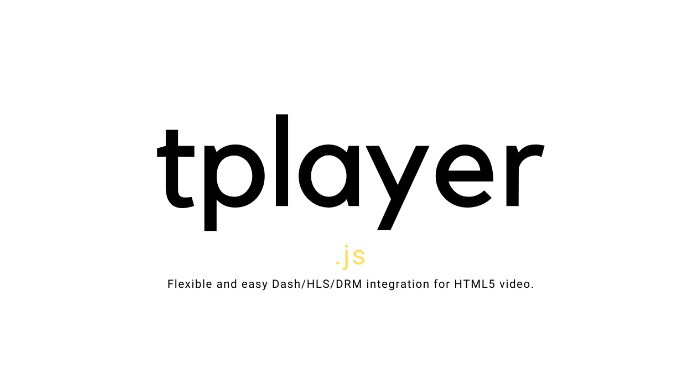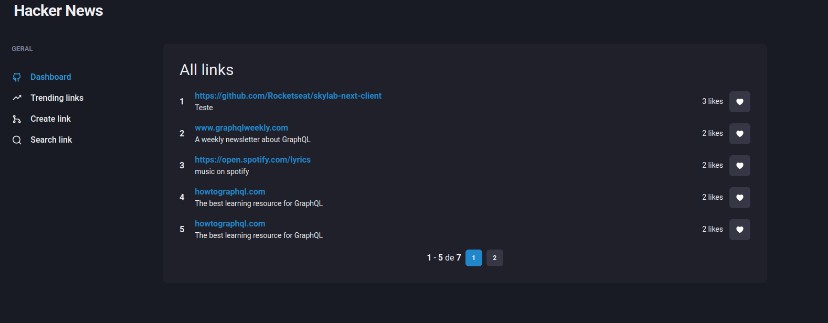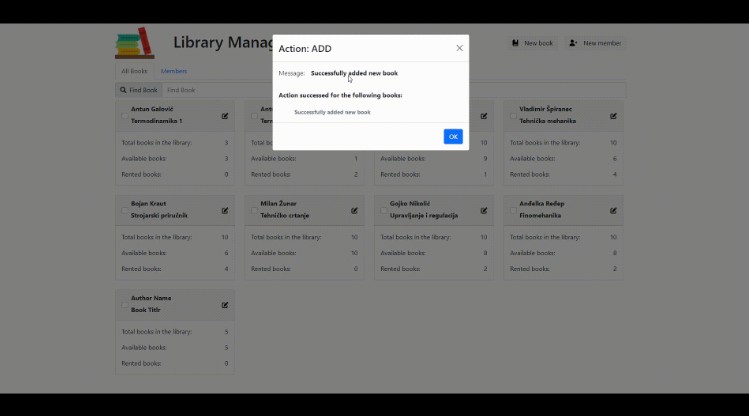This project is made possible with Plyr, Hls.js, Dash.js.
Features ?
- HLS and DASH playback ?
- Multi quality supported ?
- Drm with custom header support (Widevine & Playready) ?
- Customizable UI ⛏
- Active development ?
Setup and Usage ?
tplayer.js requires a video element in the DOM.
HTML
-
Put the tplayer.js script tag in the
<head>of your HTML document.<script src="https://cdn.jsdelivr.net/npm/[email protected]/dist/index.js"></script>
-
Put the video element in the
<body>of your HTML document.<video id="tplayer"></video>
-
Add some JS to the
<body>of your HTML document.<script> window.tplayer(options); </script>
NEXTJS
You need to import tplayer.js into a component which will be dynamically imported (No SSR) to your root.
# Install tplayer.js
npm install tplayer.js
// component\player.jsx
import { useRef, useEffect } from "react";
import { tplayer, destroyPlayer } from "tplayer.js";
export default function Player({ config }) {
const videoRef = useRef();
useEffect(() => {
tplayer({
...config,
playerElem: videoRef.current,
});
return () => destroyPlayer({ id: config.id });
}, []);
return (
<div>
<video ref={videoRef}></video>
</div>
);
}
// pages\index.jsx
import dynamic from "next/dynamic";
const Player = dynamic(import("../component/player"), { ssr: false });
export default function Home() {
return <Player config={options} />;
}
Options ?
| Name | Description | Default / Requirement / Fallback | Example |
|---|---|---|---|
| id | This is the tplayer.js instance id |
Default: tplayer | 'tplayerhtml' |
| playerElem | Video element from DOM | Required | document.getElementById(“tplayer”) |
| source | Source Object | At least one DASH or HLS URL is required | {dash:’some.mpd’, hls: ‘some.m3u8’} |
| source.dash | MPD URL of your source file | Required if DRM enabled | https://some.mpd |
| source.hls | M3U8 URL of your source file | Not required if Dash is provided | https://some.m3u8 |
| sourceHeaders.dash | Additional XHR headers for Dash | Optional | {“some”: “header”} |
| sourceHeaders.hls | Additional XHR headers for hls | Optional | {“some”: “header”} |
| drm | DRM Object | Optional | {widevine: {url: ”, headers: {}}, playready: {url: ”, headers: {}}} |
| drm.widevine | Widevine Object | Optional | widevine: {url: ”, headers: {}} |
| drm.widevine.url | Widevine license URL | Required | https://some/proxy |
| drm.widevine.headers | Headers object for license requests | Optional | {“T-Header-One”: “Hi”, “T-Header-Two”: “Hello”} |
| drm.playready | Playready Object | Optional | playready: {url: ”, headers: {}} |
| drm.playready.url | Playready license URL | Required | https://some.asmx |
| drm.playready.headers | Headers object for license requests | Optional | {“T-Header-One”: “Hi”, “T-Header-Two”: “Hello”} |
| ui | Extended UI Object | Optional | {mainColor: ‘#ff002b’} |
| ui.mainColor | Main color | Optional | #ff002b |
See this example
const options = {
id: "tplayerhtml", // anything
playerElem: document.getElementById("tplayer"), // grabbing the video element from the DOM
source: {
dash: "https://bitmovin-a.akamaihd.net/content/art-of-motion_drm/mpds/11331.mpd",
hls: "https://bitmovin-a.akamaihd.net/content/art-of-motion_drm/m3u8s/11331.m3u8",
},
sourceHeaders: {
dash: {
// "T-Header": "You can send header like this",
},
hls: {
// "T-Header": "You can send header like this",
},
},
drm: {
widevine: {
url: "https://widevine-proxy.appspot.com/proxy", // Widevine license URL
headers: {
// "T-Header": "You can send header like this",
},
},
playready: {
url: "https://playready.directtaps.net/pr/svc/rightsmanager.asmx?PlayRight=1&ContentKey=EAtsIJQPd5pFiRUrV9Layw==", // Playready license URL
headers: {
// "T-Header": "You can send header like this",
},
},
},
ui: {
mainColor: "red",
},
};
Methods ?
1. destroyPlayer({id: string})
It will destroy the player instance. Id will be same as the id of the player instance.
destroyPlayer({ id: "tplayer" });
2. getPlayer({id: string})
It will return the player instance. Id will be same as the id of the player instance. You can apply additional controls to the player instance.
let player = getPlayer({ id: "tplayer" });
player.pause();
Credits ?
License ?
tplayer.js is licensed under the MIT license





